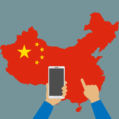How DTC Brands are Succeeding Through Elevated Customer Experience
by Hugh Williams on 1st Nov 2019 in News


Direct-to-consumer (DTC) brands are disrupting the traditional retail model and achieving immense success, writes Piero Pavone, co-founder & CTO, MainAd for DTC Daily. This has seen the UK’s top 10 DTC brands converting an impressive one in four consumers.
Data is at the heart of this success, allowing brands to forge strong, authentic relationships with loyal customers by delivering positive, personalised interactions. Because these brands control every touch point – from customer communications and inventory management to delivery and returns – they can create a full picture of the purchase journey and offer the best possible experience.
Understanding audiences is vital for DTC brands, as their products tend to appeal to consumers with a unique set of attributes. DTC shoppers are often digital natives from younger age groups, who value personalised interactions and value the sense of community that comes from shopping with such a brand. Recent IAB research reveals DTC shoppers are early adopters, always on the lookout for new things, and are likely to influence the buying choices of other people. They are more affluent than the average consumer and are willing to spend big on brands they trust, placing high value on quality and ethical products. They are also less likely to be influenced by traditional TV advertising, preferring to watch video-on-demand and use social media or news websites.
But while this general overview of the typical DTC shopper is useful, brands need to dig deeper and get to know the specific needs and preferences of their own unique audiences. Three UK brands that have achieved this data-fuelled understanding and used it to deliver an elevated customer experience are Monzo, Thread and Made.com.
Monzo banks on meeting user needs
Emerging as a challenger to the fintech market, Monzo has grown in popularity since its launch in 2016 and is now used by over 2.5 million customers. Its ethos is to deliver a mobile banking solution that addresses the pain points of traditional banking and solves customer problems. Data is fundamental to Monzo’s success, starting with the point at which it chose to enter the market, when almost half of consumers were already using mobile banking.
Customers are part of the Monzo community and are actively encouraged to suggest features, test new functionalities and provide feedback to ensure the app is meeting their expectations. The brand undertakes qualitative and quantitative research to uncover hidden needs, continually developing its product and providing solutions to problems users don’t even know they have.
Discovering its users’ needs led Monzo to offer instantly updated balances and allow customers to set spending budgets or split bills with other users. It inspired rounded up transactions to make saving simple, as well as free cash withdrawals and card transactions abroad. Understanding the consumer resulted in Monzo temporarily freezing lost cards instead of immediately cancelling them, and sending replacement cards to wherever the user is, even if they are out of the country.
Thread dons data for personalised recommendations
The mission of London-based fashion e-commerce company Thread is to make it easy for customers to dress well, which it achieves using data mixed with fashion expertise. Users start with a short style quiz, which includes selecting brands they do and don’t like and choosing photos of preferred casual or work outfits. They also provide clothing and shoe sizes, as well as any specific fit concerns such as broad shoulders or long legs. Finally, users indicate the amount they would usually spend on different items of clothing.
Using a combination of human stylists and artificial intelligence, Thread uses this data to display new, personalised, in-budget recommendations on the user’s home page each week. Customers can indicate what they do and don’t like, enabling the brand to continually learn their fashion tastes. Users can also upload their own favourite pieces of clothing and get advice on combining them with new items. Thread currently only caters to men in the UK, but there are plans to expand the customer-centric model to women’s fashion in the near future.
Made.com furnishes shoppers with unique experiences
Made.com is another growing DTC brand built around the needs of its customers, with sales increasing 37% last year. Recognising a consumer desire for homeware that is unusual and relatively exclusive without the price tag of made to order, Made.com tailors its products to customer demand, quickly producing small volumes and regularly releasing capsule collections. Customers can vote on favourite designs and decide which go into production, as well as contributing their own creative ideas, giving them an active role in product development and proving the brand is listening.
Made.com was initially an online-only brand. Then data revealed customers who were happy to buy small items online could be nervous about buying higher priced items such as sofas without being able to physically experience them. This insight led Made.com to open showrooms where shoppers can interact with their products, building confidence and trust. Once again the brand turned to data to prove value, revealing order value within a five-mile radius of its showrooms is significantly higher than the average.
These three brands are currently enjoying success because they have made a conscious effort to understand the consumer’s wants and needs. They have invested in developing a relationship with consumers, built on a two-way conversation, and with the help of intelligent customer data have identified ways to deliver exactly what DTC shoppers in general – and their own unique audience – want.







Follow Fast Growth Brands